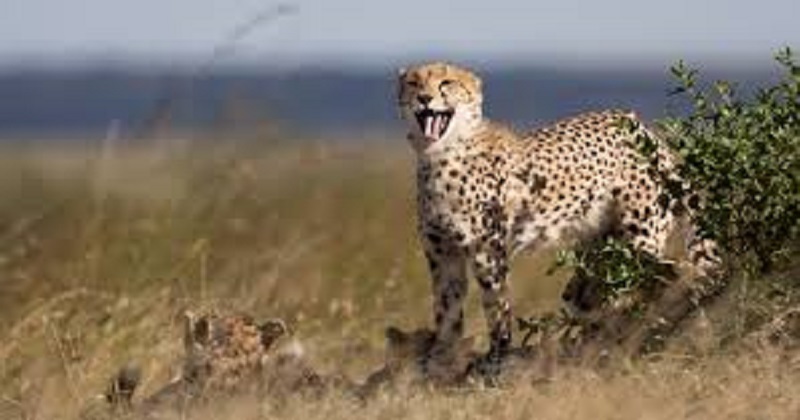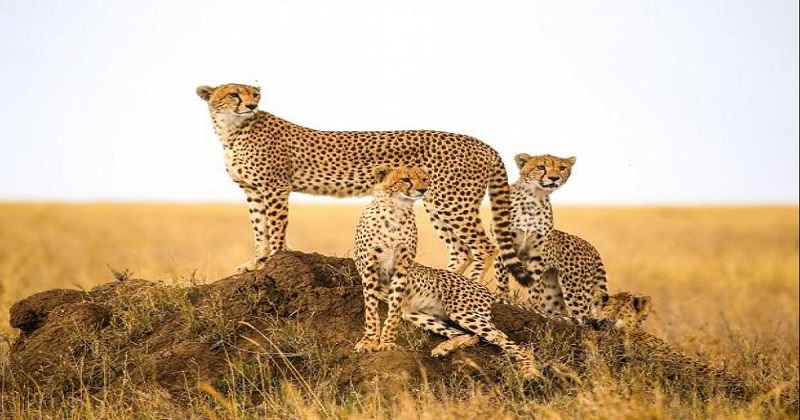
New Delhi: India prepares to greet the world’s fastest land mammal, Cheetah, which was reported regionally extinct 70 years back. In 1952, Cheetahs were declared obsolete in India. The nation has contributed the last few decades laid out a project to reintroduce the world’s fastest cat. After years of devising, the plan has ultimately reached a state of execution. South Africa’s Endangered Wildlife Trust (EWT) has granted eight cheetahs to India. The big cats are presently foreseen to reach India’s Kuno National Park in Madhya Pradesh by November this year.
With their black-spotted fur and teardrop marks, the cheetah is a gleaming animal, running across grasslands at speeds touching 70 miles (112km) an hour to catch prey. The cat is also a notably athletic animal, braking, ducking, and diving as it runs for the kill. The large majority of the 7,000 cheetahs in the world are now discovered in South Africa, Namibia and Botswana. The endangered cat was last spotted in India in 1967-68, but their numbers had greatly decreased by 1900.

The first cheetah in the world to be raised in captivity was in India during the regime of the Mughal emperor Jahangir in the 16th Century. His father, Akbar, reported there were 10,000 cheetahs during his time, including 1,000 of them in his palace. The animals were shipped for sport in the 20th Century. Research revealed that there were approximately 230 cheetahs in the wild between 1799 and 1968. It is the only big mammal to become obsolete since Independence. Hunting, decreasing habitat, and non-availability of adequate prey blackbuck, gazelle, and the hare directed to the extinction of the cat in India. During the British government, cheetahs were eliminated by bounty hunting because the cats were invading villages and destroying livestock. India has been executing attempts to reintroduce the animal since the 1950s. An effort in the 1970s – from Iran which had approximately 300 cheetahs at that time – dropped after the Shah of Iran was ousted and the mediations stopped.
The proposals for the reintroduction of cheetahs in India were asked back in 1955. But the movement obtained real impulse in 1970 when Iran, the only nation in support of the threatened Asiatic species was proposed by the Indian government to provide the animals. This was happened by decades of negotiations. Eventually, in 2010 the project to bring in Asiatic cheetahs from Iran was waived. But, a possible opportunity for India is sourcing cheetahs from Africa. Recently, nations like Kenya, Namibia, including South Africa, have contributed to donate cheetahs to India. Extended legal duels between conservationists and India’s Ministry of Environment and Forests (MoEF) have paused the process for more than eight years.

The reason for their discussion was the genetic variations between the two species and also the guidelines circulated for the relocation of exotic wildlife. In January 2020, the Supreme Court granted the green signal to the reintroduction of Southern African cheetahs. In 2021, the results of an in-depth viability evaluation, which examined the suitability of six parks and sanctuaries, were issued by the Wildlife Institute of India (WII). Finally, Kuno National Park in Madhya Pradesh, which is approximately 500km south of Delhi, was preferred as the favorable place for cheetah reintroduction by the MoEF, NTCA, and WII.
Kuno National Park holds an area of 748 sq km. In the semi-arid park, wild cattle and chital, also recognized as spotted deer, are discovered in abundance. Furthermore, the proximity of wild boar will make good prey for the arriving cheetahs. Minimal changes were needed to make the region suitable for the translocated cheetahs.
For the relocation scheme, the Indian government has allotted a sum of Rs 2 crores 65 lakh. This will move towards fencing, forest management, and the transportation of the cheetahs from South Africa.
Read more; U.S urges Houthi forces to end offence after an explosion killed 17 people
A total of eight cheetahs will be provided by EWT, out of which five are male cheetahs and three are females. The Wildlife Protection Act, 1972, gives complete protection to plants and animals under Schedule I and Schedule 2, but it views the habitat that is home to most of these protected animals. So, this seems like a good opportunity, given the protection of the cheetah can support revive grasslands and their biomes and habitat much like Project Tiger did for the forests.

Post Your Comments